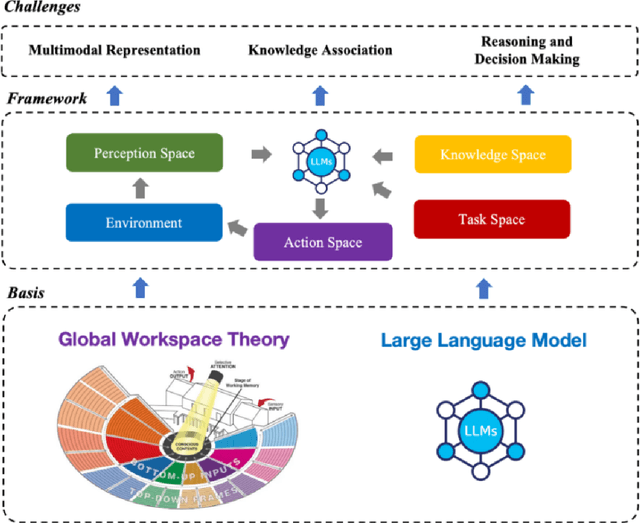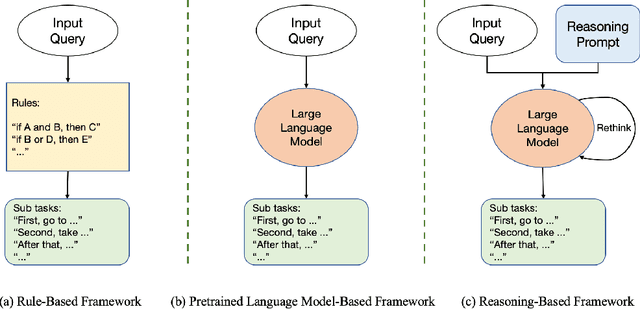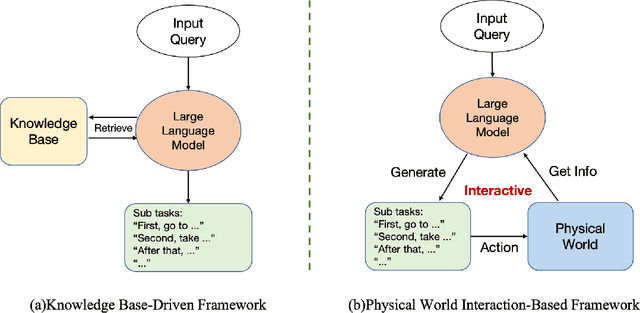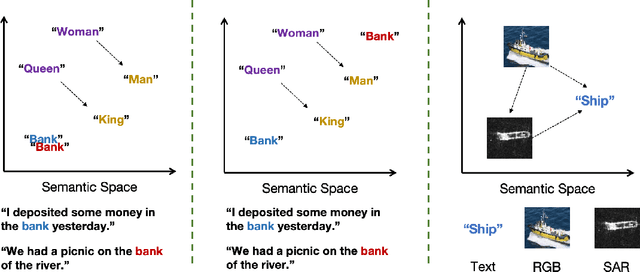Yu Liu
Peking University
Personalized Treatment Outcome Prediction from Scarce Data via Dual-Channel Knowledge Distillation and Adaptive Fusion
Oct 30, 2025Abstract:Personalized treatment outcome prediction based on trial data for small-sample and rare patient groups is critical in precision medicine. However, the costly trial data limit the prediction performance. To address this issue, we propose a cross-fidelity knowledge distillation and adaptive fusion network (CFKD-AFN), which leverages abundant but low-fidelity simulation data to enhance predictions on scarce but high-fidelity trial data. CFKD-AFN incorporates a dual-channel knowledge distillation module to extract complementary knowledge from the low-fidelity model, along with an attention-guided fusion module to dynamically integrate multi-source information. Experiments on treatment outcome prediction for the chronic obstructive pulmonary disease demonstrates significant improvements of CFKD-AFN over state-of-the-art methods in prediction accuracy, ranging from 6.67\% to 74.55\%, and strong robustness to varying high-fidelity dataset sizes. Furthermore, we extend CFKD-AFN to an interpretable variant, enabling the exploration of latent medical semantics to support clinical decision-making.
Addressing the ID-Matching Challenge in Long Video Captioning
Oct 08, 2025Abstract:Generating captions for long and complex videos is both critical and challenging, with significant implications for the growing fields of text-to-video generation and multi-modal understanding. One key challenge in long video captioning is accurately recognizing the same individuals who appear in different frames, which we refer to as the ID-Matching problem. Few prior works have focused on this important issue. Those that have, usually suffer from limited generalization and depend on point-wise matching, which limits their overall effectiveness. In this paper, unlike previous approaches, we build upon LVLMs to leverage their powerful priors. We aim to unlock the inherent ID-Matching capabilities within LVLMs themselves to enhance the ID-Matching performance of captions. Specifically, we first introduce a new benchmark for assessing the ID-Matching capabilities of video captions. Using this benchmark, we investigate LVLMs containing GPT-4o, revealing key insights that the performance of ID-Matching can be improved through two methods: 1) enhancing the usage of image information and 2) increasing the quantity of information of individual descriptions. Based on these insights, we propose a novel video captioning method called Recognizing Identities for Captioning Effectively (RICE). Extensive experiments including assessments of caption quality and ID-Matching performance, demonstrate the superiority of our approach. Notably, when implemented on GPT-4o, our RICE improves the precision of ID-Matching from 50% to 90% and improves the recall of ID-Matching from 15% to 80% compared to baseline. RICE makes it possible to continuously track different individuals in the captions of long videos.
BioX-Bridge: Model Bridging for Unsupervised Cross-Modal Knowledge Transfer across Biosignals
Oct 02, 2025Abstract:Biosignals offer valuable insights into the physiological states of the human body. Although biosignal modalities differ in functionality, signal fidelity, sensor comfort, and cost, they are often intercorrelated, reflecting the holistic and interconnected nature of human physiology. This opens up the possibility of performing the same tasks using alternative biosignal modalities, thereby improving the accessibility, usability, and adaptability of health monitoring systems. However, the limited availability of large labeled datasets presents challenges for training models tailored to specific tasks and modalities of interest. Unsupervised cross-modal knowledge transfer offers a promising solution by leveraging knowledge from an existing modality to support model training for a new modality. Existing methods are typically based on knowledge distillation, which requires running a teacher model alongside student model training, resulting in high computational and memory overhead. This challenge is further exacerbated by the recent development of foundation models that demonstrate superior performance and generalization across tasks at the cost of large model sizes. To this end, we explore a new framework for unsupervised cross-modal knowledge transfer of biosignals by training a lightweight bridge network to align the intermediate representations and enable information flow between foundation models and across modalities. Specifically, we introduce an efficient strategy for selecting alignment positions where the bridge should be constructed, along with a flexible prototype network as the bridge architecture. Extensive experiments across multiple biosignal modalities, tasks, and datasets show that BioX-Bridge reduces the number of trainable parameters by 88--99\% while maintaining or even improving transfer performance compared to state-of-the-art methods.
DiffCamera: Arbitrary Refocusing on Images
Sep 30, 2025Abstract:The depth-of-field (DoF) effect, which introduces aesthetically pleasing blur, enhances photographic quality but is fixed and difficult to modify once the image has been created. This becomes problematic when the applied blur is undesirable~(e.g., the subject is out of focus). To address this, we propose DiffCamera, a model that enables flexible refocusing of a created image conditioned on an arbitrary new focus point and a blur level. Specifically, we design a diffusion transformer framework for refocusing learning. However, the training requires pairs of data with different focus planes and bokeh levels in the same scene, which are hard to acquire. To overcome this limitation, we develop a simulation-based pipeline to generate large-scale image pairs with varying focus planes and bokeh levels. With the simulated data, we find that training with only a vanilla diffusion objective often leads to incorrect DoF behaviors due to the complexity of the task. This requires a stronger constraint during training. Inspired by the photographic principle that photos of different focus planes can be linearly blended into a multi-focus image, we propose a stacking constraint during training to enforce precise DoF manipulation. This constraint enhances model training by imposing physically grounded refocusing behavior that the focusing results should be faithfully aligned with the scene structure and the camera conditions so that they can be combined into the correct multi-focus image. We also construct a benchmark to evaluate the effectiveness of our refocusing model. Extensive experiments demonstrate that DiffCamera supports stable refocusing across a wide range of scenes, providing unprecedented control over DoF adjustments for photography and generative AI applications.
Is Meta-Learning Out? Rethinking Unsupervised Few-Shot Classification with Limited Entropy
Sep 16, 2025



Abstract:Meta-learning is a powerful paradigm for tackling few-shot tasks. However, recent studies indicate that models trained with the whole-class training strategy can achieve comparable performance to those trained with meta-learning in few-shot classification tasks. To demonstrate the value of meta-learning, we establish an entropy-limited supervised setting for fair comparisons. Through both theoretical analysis and experimental validation, we establish that meta-learning has a tighter generalization bound compared to whole-class training. We unravel that meta-learning is more efficient with limited entropy and is more robust to label noise and heterogeneous tasks, making it well-suited for unsupervised tasks. Based on these insights, We propose MINO, a meta-learning framework designed to enhance unsupervised performance. MINO utilizes the adaptive clustering algorithm DBSCAN with a dynamic head for unsupervised task construction and a stability-based meta-scaler for robustness against label noise. Extensive experiments confirm its effectiveness in multiple unsupervised few-shot and zero-shot tasks.
Lego-Edit: A General Image Editing Framework with Model-Level Bricks and MLLM Builder
Sep 16, 2025Abstract:Instruction-based image editing has garnered significant attention due to its direct interaction with users. However, real-world user instructions are immensely diverse, and existing methods often fail to generalize effectively to instructions outside their training domain, limiting their practical application. To address this, we propose Lego-Edit, which leverages the generalization capability of Multi-modal Large Language Model (MLLM) to organize a suite of model-level editing tools to tackle this challenge. Lego-Edit incorporates two key designs: (1) a model-level toolkit comprising diverse models efficiently trained on limited data and several image manipulation functions, enabling fine-grained composition of editing actions by the MLLM; and (2) a three-stage progressive reinforcement learning approach that uses feedback on unannotated, open-domain instructions to train the MLLM, equipping it with generalized reasoning capabilities for handling real-world instructions. Experiments demonstrate that Lego-Edit achieves state-of-the-art performance on GEdit-Bench and ImgBench. It exhibits robust reasoning capabilities for open-domain instructions and can utilize newly introduced editing tools without additional fine-tuning. Code is available: https://github.com/xiaomi-research/lego-edit.
A Survey of Scientific Large Language Models: From Data Foundations to Agent Frontiers
Aug 28, 2025



Abstract:Scientific Large Language Models (Sci-LLMs) are transforming how knowledge is represented, integrated, and applied in scientific research, yet their progress is shaped by the complex nature of scientific data. This survey presents a comprehensive, data-centric synthesis that reframes the development of Sci-LLMs as a co-evolution between models and their underlying data substrate. We formulate a unified taxonomy of scientific data and a hierarchical model of scientific knowledge, emphasizing the multimodal, cross-scale, and domain-specific challenges that differentiate scientific corpora from general natural language processing datasets. We systematically review recent Sci-LLMs, from general-purpose foundations to specialized models across diverse scientific disciplines, alongside an extensive analysis of over 270 pre-/post-training datasets, showing why Sci-LLMs pose distinct demands -- heterogeneous, multi-scale, uncertainty-laden corpora that require representations preserving domain invariance and enabling cross-modal reasoning. On evaluation, we examine over 190 benchmark datasets and trace a shift from static exams toward process- and discovery-oriented assessments with advanced evaluation protocols. These data-centric analyses highlight persistent issues in scientific data development and discuss emerging solutions involving semi-automated annotation pipelines and expert validation. Finally, we outline a paradigm shift toward closed-loop systems where autonomous agents based on Sci-LLMs actively experiment, validate, and contribute to a living, evolving knowledge base. Collectively, this work provides a roadmap for building trustworthy, continually evolving artificial intelligence (AI) systems that function as a true partner in accelerating scientific discovery.
WXSOD: A Benchmark for Robust Salient Object Detection in Adverse Weather Conditions
Aug 17, 2025Abstract:Salient object detection (SOD) in complex environments remains a challenging research topic. Most existing methods perform well in natural scenes with negligible noise, and tend to leverage multi-modal information (e.g., depth and infrared) to enhance accuracy. However, few studies are concerned with the damage of weather noise on SOD performance due to the lack of dataset with pixel-wise annotations. To bridge this gap, this paper introduces a novel Weather-eXtended Salient Object Detection (WXSOD) dataset. It consists of 14,945 RGB images with diverse weather noise, along with the corresponding ground truth annotations and weather labels. To verify algorithm generalization, WXSOD contains two test sets, i.e., a synthesized test set and a real test set. The former is generated by adding weather noise to clean images, while the latter contains real-world weather noise. Based on WXSOD, we propose an efficient baseline, termed Weather-aware Feature Aggregation Network (WFANet), which adopts a fully supervised two-branch architecture. Specifically, the weather prediction branch mines weather-related deep features, while the saliency detection branch fuses semantic features extracted from the backbone with weather features for SOD. Comprehensive comparisons against 17 SOD methods shows that our WFANet achieves superior performance on WXSOD. The code and benchmark results will be made publicly available at https://github.com/C-water/WXSOD
Intention-Aware Diffusion Model for Pedestrian Trajectory Prediction
Aug 10, 2025



Abstract:Predicting pedestrian motion trajectories is critical for the path planning and motion control of autonomous vehicles. Recent diffusion-based models have shown promising results in capturing the inherent stochasticity of pedestrian behavior for trajectory prediction. However, the absence of explicit semantic modelling of pedestrian intent in many diffusion-based methods may result in misinterpreted behaviors and reduced prediction accuracy. To address the above challenges, we propose a diffusion-based pedestrian trajectory prediction framework that incorporates both short-term and long-term motion intentions. Short-term intent is modelled using a residual polar representation, which decouples direction and magnitude to capture fine-grained local motion patterns. Long-term intent is estimated through a learnable, token-based endpoint predictor that generates multiple candidate goals with associated probabilities, enabling multimodal and context-aware intention modelling. Furthermore, we enhance the diffusion process by incorporating adaptive guidance and a residual noise predictor that dynamically refines denoising accuracy. The proposed framework is evaluated on the widely used ETH, UCY, and SDD benchmarks, demonstrating competitive results against state-of-the-art methods.
Remote Sensing Image Intelligent Interpretation with the Language-Centered Perspective: Principles, Methods and Challenges
Aug 09, 2025



Abstract:The mainstream paradigm of remote sensing image interpretation has long been dominated by vision-centered models, which rely on visual features for semantic understanding. However, these models face inherent limitations in handling multi-modal reasoning, semantic abstraction, and interactive decision-making. While recent advances have introduced Large Language Models (LLMs) into remote sensing workflows, existing studies primarily focus on downstream applications, lacking a unified theoretical framework that explains the cognitive role of language. This review advocates a paradigm shift from vision-centered to language-centered remote sensing interpretation. Drawing inspiration from the Global Workspace Theory (GWT) of human cognition, We propose a language-centered framework for remote sensing interpretation that treats LLMs as the cognitive central hub integrating perceptual, task, knowledge and action spaces to enable unified understanding, reasoning, and decision-making. We first explore the potential of LLMs as the central cognitive component in remote sensing interpretation, and then summarize core technical challenges, including unified multimodal representation, knowledge association, and reasoning and decision-making. Furthermore, we construct a global workspace-driven interpretation mechanism and review how language-centered solutions address each challenge. Finally, we outline future research directions from four perspectives: adaptive alignment of multimodal data, task understanding under dynamic knowledge constraints, trustworthy reasoning, and autonomous interaction. This work aims to provide a conceptual foundation for the next generation of remote sensing interpretation systems and establish a roadmap toward cognition-driven intelligent geospatial analysis.
 Add to Chrome
Add to Chrome Add to Firefox
Add to Firefox Add to Edge
Add to Edge